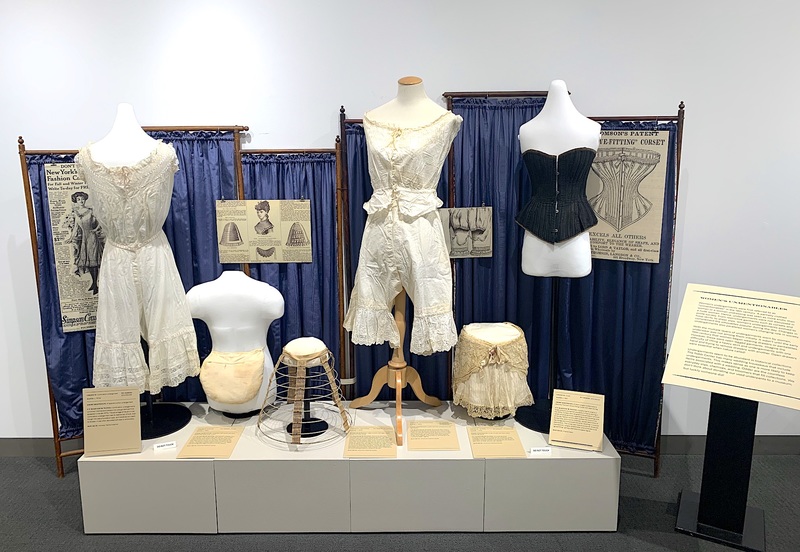Women’s undergarments were first referred to as “unmentionables” in the 18th century.
A partially clothed woman or a woman undressing was seen as more erotic than a nude woman. Hence, undergarments were not discussed in polite society. From restrictive garments such as corsets and hoop skirts, to sheer slips, women’s undergarments evolved to complement the silhouettes popular during the day. Changes in undergarments also paralleled women’s changing role in society.
With the multiple layers of undergarments worn by women, underwear was not among them initially. It wasn’t until the early 19th century that women began wearing drawers or pantalettes. However, these were open legged garments. Imagine the difficulty of lifting a heavy skirt and undergarments with one hand and trying to remove drawers with another. Open drawers were essential when nature called!
Undergarments seem to be abundant in historical collections. The Nabb Center has many wedding trousseaus that include undergarments. This makes sense as one is more likely to keep items associated with a wedding. Odder are the countless everyday slips, chemises, and bloomers that fill collections. We don’t think about donating our used underpants to a museum,but luckily someone did!

